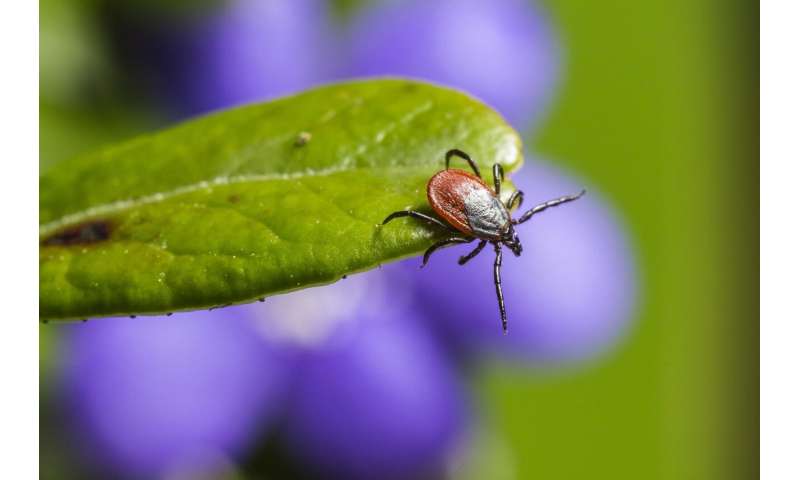#Anaplasmosis bacterium tinkers with tick’s gene expression to spread to new hosts
“#Anaplasmosis bacterium tinkers with tick’s gene expression to spread to new hosts”

For the first time, scientists have shown that the bacterium that causes the tick-borne disease anaplasmosis interferes with tick gene expression for its survival inside cells and to spread to a new vertebrate host. Girish Neelakanta of Old Dominion University and colleagues report these findings in a study published July 2nd in PLOS Genetics.
In the United States, new cases of tick-borne diseases, such as anaplasmosis, Lyme disease and babesiosis, are on the rise. There are few ways to prevent ticks from spreading these pathogens to humans, so researchers decided to look instead at interactions between the pathogen and the tick to find new ways to control the spread of disease. By looking at how the bacterium that causes anaplasmosis affects gene expression in the black legged tick, they discovered that the bacterium dials down the level of a regulatory molecule that normally stops the production of a protein called the Organic Anion Transporting Polypeptide (OATP). Further experiments showed that the bacterium’s actions cause an increase in OATP levels, which results in higher numbers of the bacterium that helps it to spread to a new vertebrate host, in this case, mice.
Previous experiments have shown that both bacterial and viral pathogens depend on OATPs to colonize and survive inside ticks. Together, the findings suggest that OATPs may be ideal candidates for developing new vaccines to protect humans against tick-borne illnesses. The current study also represents an important advance in our understanding of the tick-pathogen relationship, as currently we know surprisingly little about the mechanisms that allow pathogens to use ticks as vectors. Understanding how pathogens manipulate gene expression in vectors for their benefit may lead to novel strategies for blocking their transmission from the vector to vertebrate hosts.
“Studies like these would provide important evidence that tick molecules, such as OATPs, play a significant role in tick-pathogen interactions,” commented author Girish Neelakanta. “Current and future studies from my laboratory are addressing therapeutic potential of OATP as a candidate for the development of a strong anti-vector vaccine to block transmission of tick-borne pathogens.”
More information:
Ramasamy E, Taank V, Anderson JF, Sultana H, Neelakanta G (2020) Repression of tick microRNA-133 induces organic anion transporting polypeptide expression critical for Anaplasma phagocytophilum survival in the vector and transmission to the vertebrate host. PLoS Genet 16(7): e1008856. doi.org/10.1371/journal.pgen.1008856
Anaplasmosis bacterium tinkers with tick’s gene expression to spread to new hosts (2020, July 2)
retrieved 2 July 2020
from https://phys.org/news/2020-07-anaplasmosis-bacterium-tinkers-gene-hosts.html
This document is subject to copyright. Apart from any fair dealing for the purpose of private study or research, no
part may be reproduced without the written permission. The content is provided for information purposes only.
If you want to read more Like this articles, you can visit our Science category.
if you want to watch Movies or Tv Shows go to Dizi.BuradaBiliyorum.Com for forums sites go to Forum.BuradaBiliyorum.Com




